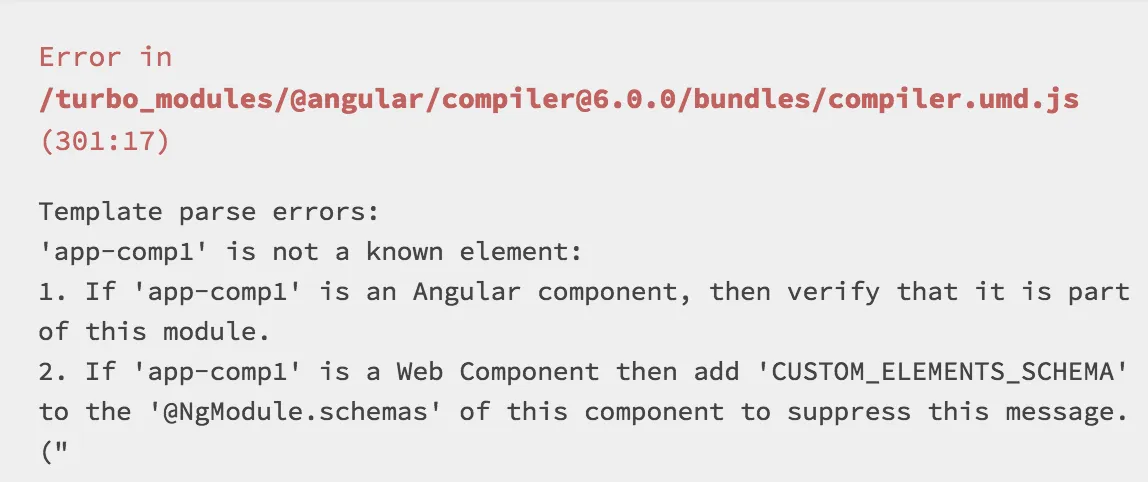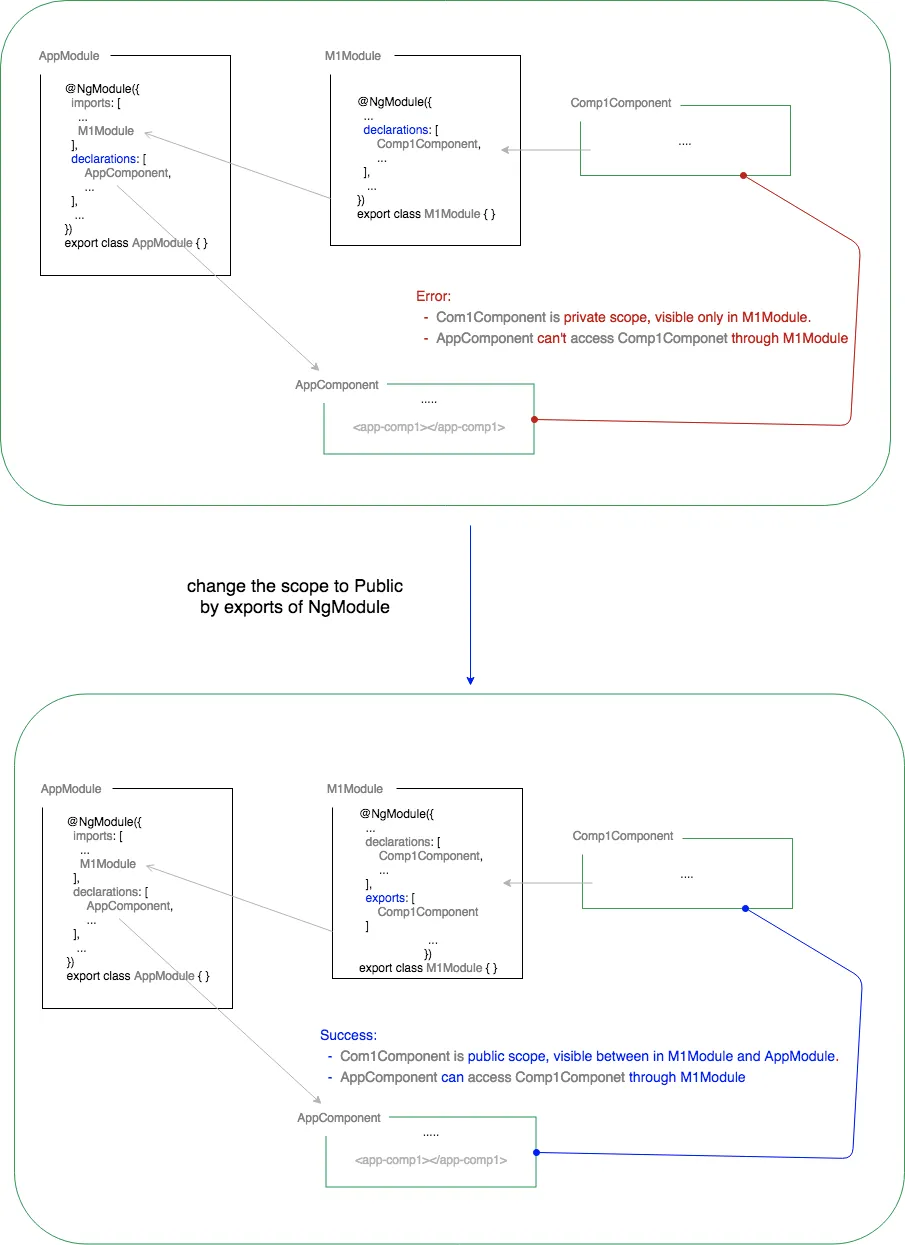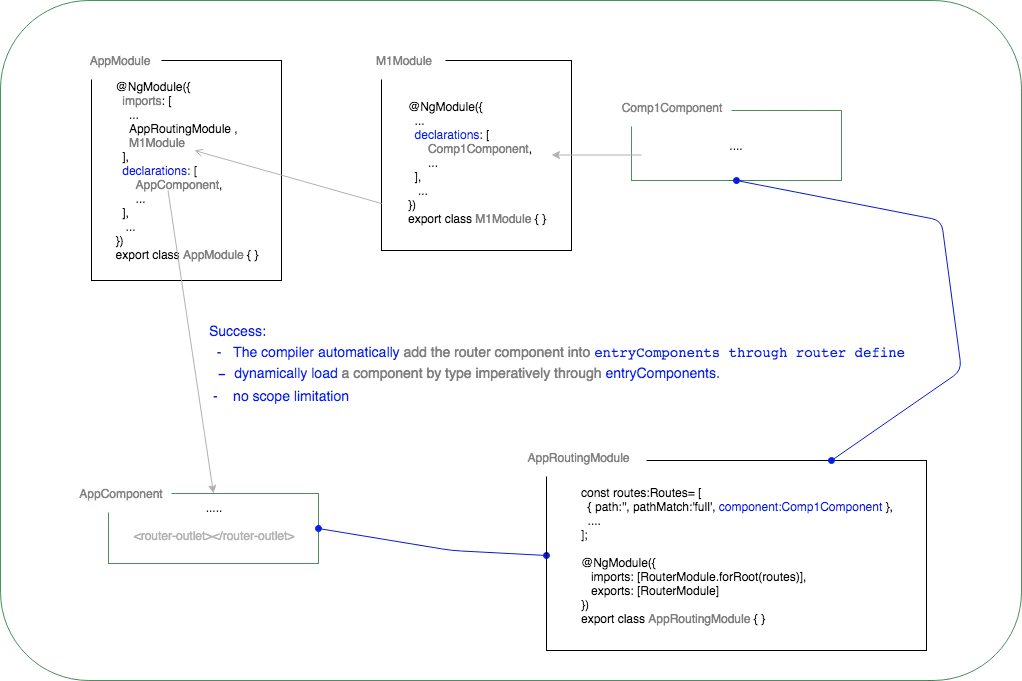我不理解router-outlet和模块导出数组编译策略之间的区别。
router-outlet将通过ComponentFactoryResolver自动生成组件。- 如果您没有使用
router-outlet来访问其他模块的组件,则会从模板解析器引发错误。
router-outlet那样自动生成在模块中定义的组件。
我知道如果想要使用其他模块的组件,就需要将其添加到exports中。
import { NgModule } from '@angular/core';
import { BrowserModule } from '@angular/platform-browser';
import { FormsModule } from '@angular/forms';
import { AppComponent } from './app.component';
import { HelloComponent } from './hello.component';
import { M1Module } from './m1/m1.module';
// import { AppRoutingModule } from './app-routing.module';
@NgModule({
imports: [
BrowserModule,
// AppRoutingModule,
M1Module
],
declarations: [AppComponent, HelloComponent],
bootstrap: [AppComponent]
})
export class AppModule { }
----------------------
@NgModule({
imports: [
CommonModule
],
declarations: [
Comp1Component,
Comp2Component
],
exports: [
Comp1Component
]
})
export class M1Module {}<hello name="{{ name }}"></hello>
<p>
Start editing to see some magic happen :)
</p>
<app-comp1></app-comp1>如果我通过路由访问组件
(http://example.domain.com/comp1),它不需要导出,它可以正常工作。
import { AppComponent } from './app.component';
import { HelloComponent } from './hello.component';
import { M1Module } from './m1/m1.module';
import { AppRoutingModule } from './app-routing.module';
@NgModule({
imports: [
BrowserModule,
AppRoutingModule,
M1Module
],
declarations: [AppComponent, HelloComponent],
bootstrap: [AppComponent]
})
export class AppModule { }
/*****************************************************/
import { NgModule } from '@angular/core';
import { RouterModule, Routes } from '@angular/router';
import { Comp1Component } from './m1/comp1/comp1.component';
import { Comp2Component } from './m1/comp2/comp2.component';
const routes: Routes = [
{ path: 'comp1', component: Comp1Component },
{ path: 'comp2', component: Comp2Component }
];
@NgModule({
imports: [ RouterModule.forRoot(routes) ],
exports: [ RouterModule ]
})
export class AppRoutingModule {}
/*****************************************************/
import { NgModule } from '@angular/core';
import { CommonModule } from '@angular/common';
import { Comp1Component } from './comp1/comp1.component';
import { Comp2Component } from './comp2/comp2.component';
@NgModule({
imports: [
CommonModule
],
declarations: [Comp1Component, Comp2Component],
})
export class M1Module { }<hello name="{{ name }}"></hello>
<p>
Start editing to see some magic happen :)
</p>
<!-- it's need to use export -->
<!-- <app-comp1></app-comp1> -->
<!-- it doesn't need to use export -->
<router-outlet></router-outlet>感谢大家的回答,总结一下我理解的内容:
通过模块的导出数组加载组件。
通过路由加载组件


